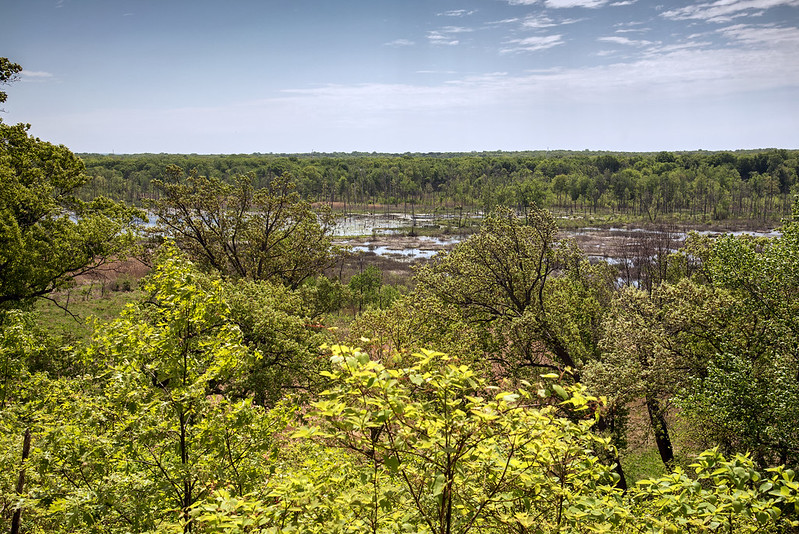
There is plenty more to the Indiana Dunes National Park than dunes and Lake Michigan. The largest interdunal watershed in the Lake Michigan area is located here. Called the Great Marsh, this area was once drained to make way for homes and agriculture. In 1998, this area was restored by the park service back to it's original state of a wetland.
Visiting the park for many years, I have noticed the trees in the marsh have all but disappeared. Not knowing the story of the area, I figured the wetlands were drained many years ago, and more recently, the area was left to come back to being a marsh. The area flooded again, and the trees that were once growing in dry soil, have since died and are slowly decaying into the swampy area.
From the dune ridge trail at Kemil Beach, a portion of the marsh can be seen. I've hiked this trail numerous time and always wanted to walk through the marsh below. For some reason, I failed to realize that the closed portion of Beverly Drive passed through this exact area - it was not easily seen from above. When I realized this, I immediately walked down to the road and followed it through the wetland.
The road has been closed for at least five years, and in that time nature has begun to reclaim the surface. It makes a great trail for people walking, running, and biking, even though it's not a natural trail. There are a few small channels under the road that connect the two sides of the interdunal wetland, and small wood bridges spanning them to make them passable.
I'm not certain what will become of this road - will the park make it a designated trail, or attempt to keep people away from it? For now, it seems to be a popular trail for locals who know the area, and the in's and out's of the old road system.





